Last Updated on October 30, 2025 by teamobn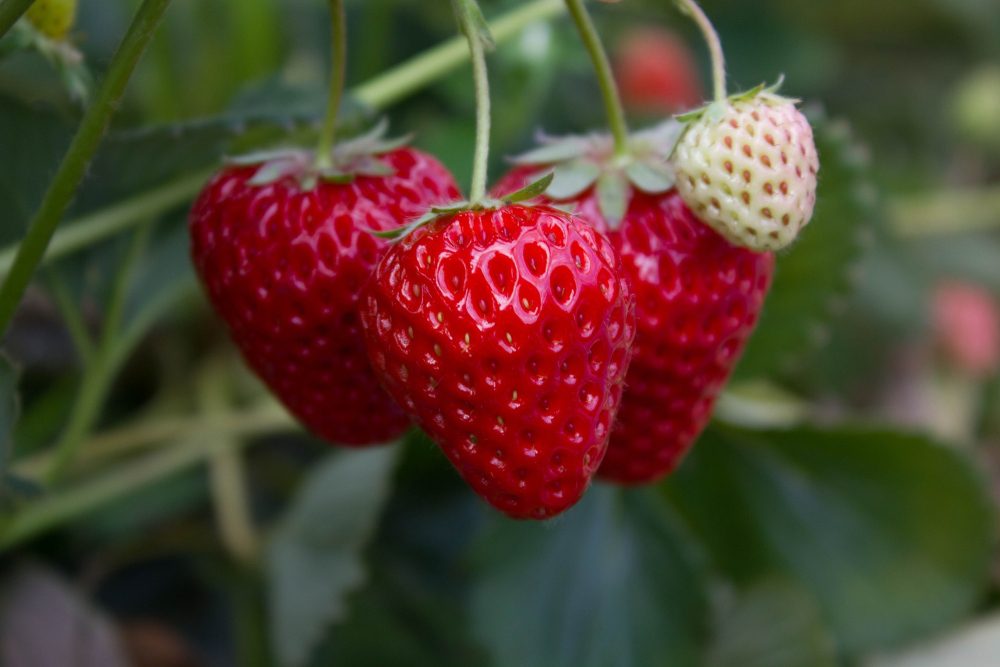
Integrating edible plants into a garden or backyard is worth the effort. These plants add personality and character to your outdoor space. With care and effort, these plants give you unique ingredients for your pasta, soup, or salads.
This guide will show you how to create an edible landscape within your home. We will also help you choose the right plants to add to your DIY garden.
Contents
Why Integrate Edible Plants in Your Landscape
Is growing and maintaining edible plant garden worth your time? Well, it’s a pretty landscape and tasty to eat. Do you still need convincing? Here is why making an edible plant garden is worth the space and investment.
Dual-Purpose Beauty and Functionality
Imagine a garden that not only looks good but also feeds you. That’s what you get with edible plant garden. Flowers are beautiful, but they usually just sit there. Edible plants, on the other hand, serve two purposes. They add color and shape to your garden.
At the right time, you can pick these plants from your garden and serve them for dinner. Think about growing strawberry plants with their red fruit and green leaves. Or try basil plants that bring a lush green look and a tasty ingredient to your meals. You get the best of both worlds.
Ecological Benefits
Adding edible plants to your landscape is good for the planet. First, you’re reducing the need for harmful pesticides. Many edible plants are pest-resistant by nature. This quality means you can grow them without harming the surrounding environment.
Second, some of the edible plants are not as demanding as other plants regarding water. These low-maintenance plants let you save on your water bills.
Cost Savings
Money matters. Edible landscaping can help you save some. Seeds and young plants cost less than the produce you find at the store. Plus, many edible plants are perennials, which means they grow back year after year.
You make a one-time investment for years of food. Take herbs like rosemary and thyme. Plant them once, and you’ll have fresh herbs for years. Less spending on plants and groceries adds up over time. It’s like putting cash back in your pocket.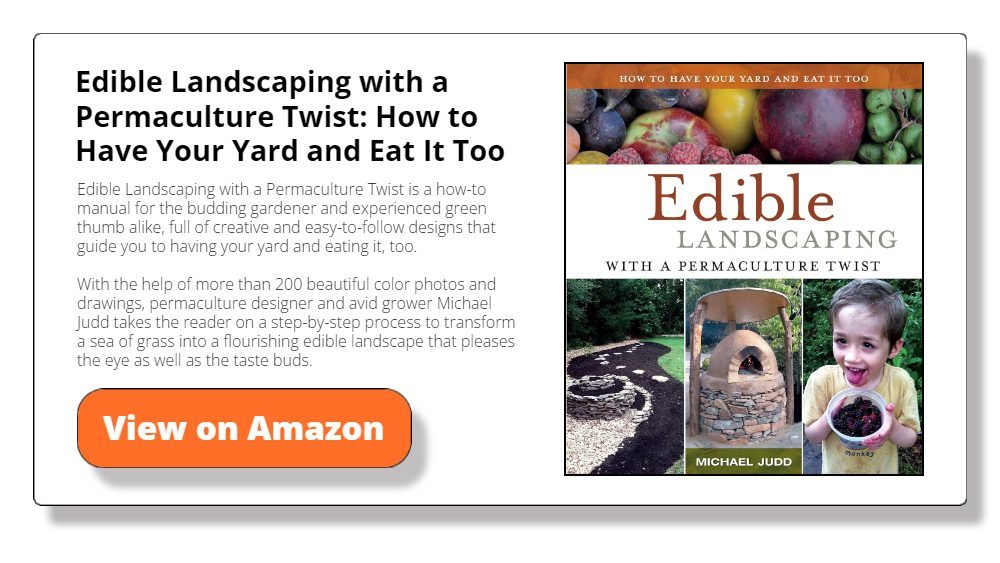
Freshness at Your Fingertips
Nothing beats the taste of freshly picked produce. With edible plants in your yard, that fresh taste is just a few steps away. Say goodbye to wilted, store-bought herbs. No more bland, off-season fruits and veggies.
When you grow your own, you pick what you need when needed. The flavors are more vibrant, the nutrients are intact, and you enjoy food at its peak. It’s a culinary game-changer that makes meals more exciting.
Encourages Healthy Eating
Having a garden full of edible plants makes healthy eating easy. A fresh salad is always an option when you have tomatoes, lettuce, and spinach in your yard. You’re more likely to snack on fruits and herbs you’ve grown yourself.
Growing your food is far different from buying it. You get to taste the effort and time you put into each plant. Plus, kids are more likely to eat veggies they’ve seen grow. Growing an edible plant garden is a fun way to encourage children to eat their salads and green soups. It turns mealtime into an event that the whole family can participate in.
As you can see, edible plant garden offers a range of perks. It’s a functional and beautiful way to enjoy your outdoor space. The money you save, the beautification of outdoor space, and the healthy ingredients you can enjoy cannot be ignored.
Choosing the Right Plants
The plants are the first things to consider when making an edible plant garden. Your decisions should be centered around these plants, such as the soil type or the garden’s location, since they have different growth requirements. Below are the edible plants to consider growing:
Tomatoes
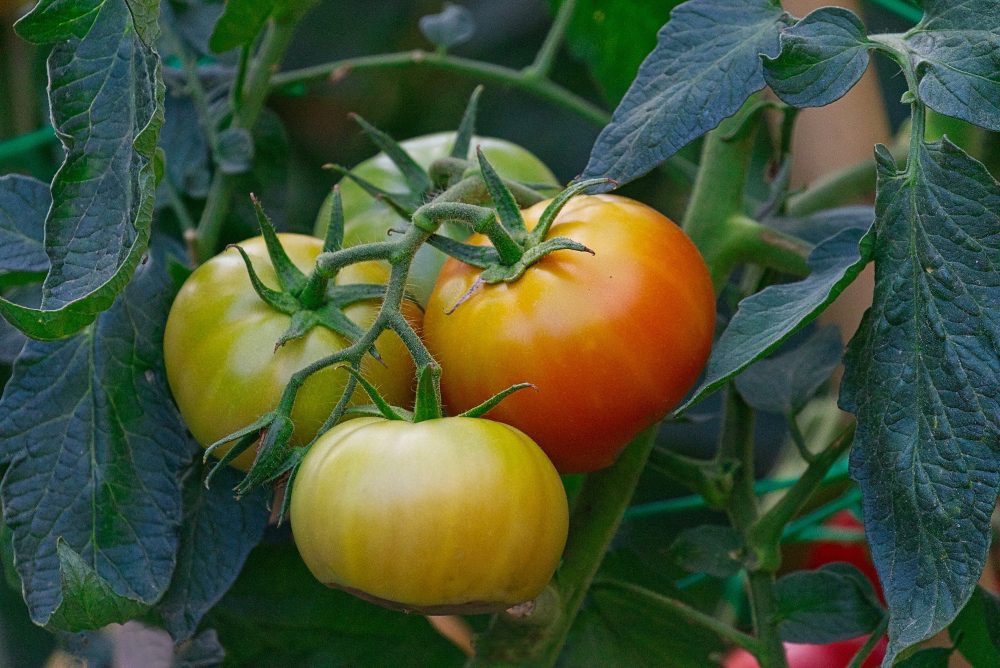
Tomatoes are a garden favorite among edible plants that offers bright red, juicy fruit. They grow on vines and can be supported with stakes or cages. Tomatoes come in many varieties, from small cherry to large beefsteak.
Growing tomatoes requires soil with a pH of 5.8 to 7.0 that does not hold much water, like sandy loam. They love a good amount of sunlight, at least 6-8 hours a day. Water them regularly, but avoid making the soil too soggy. Fertilize with a balanced mix as the plants start to bloom.
Harvest time varies by type, but generally, pick them when the color is even and bright. Simply twist the tomato off the vine or use scissors to cut the stem. Handle with care to avoid bruising.
Basil
Basil is an aromatic herb with green, leafy foliage. Adding this herb to your pasta, soup, or stew will elevate them to Italian heights. These edible plants can reach two feet tall, adding a splash of green to your garden.
Plant basil in well-drained soil and place them in a sunny spot. They prefer slightly acidic soil. Water the plant consistently, but don’t let it sit in water. Use a diluted liquid fertilizer every 4-6 weeks.
To harvest this edible plant, simply snip off the top leaves, leaving some behind for continued growth. Always harvest in the morning for the best flavor. Avoid cutting the woody stems. Focus on the leaves.
Mint
Mint plants are hardy perennials that spread fast. The leaves have a strong aroma that can spread across your yard. Mint adds more flavors to your beverages or desserts. Their leaves can also be great as garnishes for various dishes.
Mint plants are versatile enough to grow on any soil. They also grow in places with little sunshine. Keep the soil moist but well-drained. Mint doesn’t need much fertilizer; a little compost will do the trick.
Harvest mint leaves before the plant flowers for the best flavor. Cut the stems about one inch from the ground. You can do this multiple times in the growing season. Mint is best used fresh but can also be dried for later use.
Strawberries
Strawberries offer sweet, red fruit and grow low to the ground. The edible plant has green leaves and white flowers. They add both taste and visual appeal to your garden.
Plant strawberries in well-drained, sandy soil. They enjoy full sun but can tolerate some shade. Water them consistently, especially during dry periods. A balanced fertilizer applied in early spring helps boost growth.
To harvest, pick the berries when they are fully red. Gently twist them off the stems to avoid damaging the plant. The best time to harvest is in the morning when temperatures are cooler.
Lettuce
Lettuce are green edible plants that pop from the ground. It’s the main ingredient in salads and comes in various types, like romaine, butterhead, and iceberg.
Plant lettuce in loose, well-drained soil. It prefers cooler temperatures and partial shade. Keep the soil moist but not soggy. Use a nitrogen-rich fertilizer for better leaf production.
Harvest lettuce by cutting the outer leaves first. This lets the inner leaves keep growing. You can also harvest the whole plant when it’s mature, cutting it at the base.
Rosemary
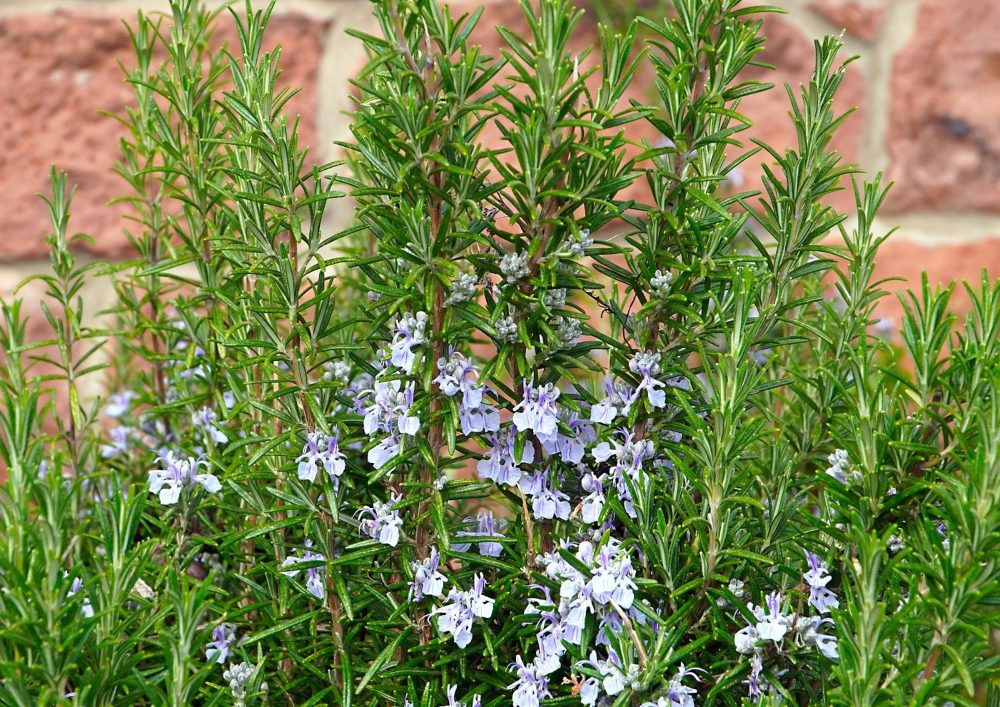
Rosemary is an aromatic herb with needle-like leaves. It’s often used in cooking and offers a woody, evergreen scent. The plants can grow tall and even flower, adding beauty to your garden.
For rosemary, well-drained soil and full sun are best. It’s drought-resistant, so water sparingly. Too much water can lead to root rot. No need for a lot of fertilizer. Just a little compost is fine.
Harvest by snipping off the top sprigs, leaving at least two-thirds of the plant intact. It’s best to harvest in the morning. Rosemary can be used fresh or dried for later use.
Lavender
Lavender is known for its purple flowers and calming scent. It’s used in a variety of products, from teas to lotions. The plants are bushy with narrow, green leaves.
Plant lavender in well-drained, slightly alkaline soil. It loves full sun and is drought-resistant. Water when the soil starts to dry out. A balanced, slow-release fertilizer applied in the spring works well.
Harvest lavender just before the buds fully open. Cut the stems, leaving a few inches of the plant behind. Early morning is the best time to harvest. Lavender can be used fresh or dried for various purposes.
Cucumbers
Cucumbers are long green vegetables with a refreshing taste. You can slice them for sandwiches and salads or pickle them whole. The cucumber vines can climb decorative trellis that do not take up too much space in your outdoor space.
Plant cucumbers in well-drained soil rich in organic matter. These plants can reach their peak if they are constantly under the sun. Water regularly, keeping the soil consistently moist. Use a balanced fertilizer when planting and when flowers appear.
Harvest cucumbers when they reach the size you prefer. Cut them off the vine using scissors. Harvesting in the morning when they’re crisp and hydrated is good.
Blueberries
Blueberries are edible plant shrubs that offer small, juicy blue fruit. They also give beautiful fall foliage. Blueberries can be a landscape star, offering both beauty and taste.
Blueberries need acidic soil and a sunny location. Water them regularly, especially during dry spells. A fertilizer designed for acid-loving plants works best.
To harvest, pick the berries when they turn a deep blue. They should easily come off when touched. Harvesting in the morning for the best fruit quality is a good idea.
Zucchini
Zucchini plants offer green or yellow, elongated fruit. The large, broad leaves make them a garden standout. Zucchini is versatile in the kitchen since you can grill, fry, or bake slices of this vegetable.
Plant zucchini in well-drained, fertile soil. They need full sun and plenty of space. Water consistently, but avoid getting the leaves wet. A balanced fertilizer applied at planting will aid growth.
Harvest zucchini when they are about 6-8 inches long. Use a sharp knife to cut them off the plant. It’s best to harvest in the morning when they are at their freshest.
Kale
Kale is a leafy green that comes in various types, like curly, flat, or even with a bluish tint. It’s a nutrient powerhouse that adds color to your garden.
Plant kale in well-drained, fertile soil. It prefers full sun but can tolerate partial shade. Keep the soil moist and use a nitrogen-rich fertilizer for lush leaves.
To harvest, start with the outer leaves, allowing the center to grow. Cut the leaves when they are about the size of your hand. Early morning is the best time to harvest for peak freshness.
Choosing the right plants sets the foundation for a successful edible plant garden. From herbs to fruits to veggies, the options are many. Pick what works for you and your space.
Design Ideas
Now that you know which plants to grow, let’s talk design. Edible plant garden can be both beautiful and functional. With the right layout, you can make your garden a feast for the eyes and the table.
Mixing Colors and Textures
Mixing colors and textures can make your garden pop. Bright red tomatoes can sit next to deep green basil. This adds visual interest and makes the garden feel alive.
Mix up the leaf shapes like the round leaves of nasturtiums with the feathery fronds of carrots. The contrast makes your garden visually appealing. It’s like a live art piece you can eat.
Creating Edible Borders
Edible plant borders serve two purposes. They define the edges of your garden and offer more planting space. Use low-growing plants like strawberries or lettuce to line pathways. This makes it easy to harvest as you walk through.
You can also use taller plants like corn or sunflowers to frame the edible plant garden. They make a strong visual impact and offer shade to smaller plants.
Vertical Gardening for Small Spaces
Not much ground to work with? Go up! Vertical gardening lets you grow in small spaces. Use trellises for cucumbers or tomatoes. Planting upwards also makes it easier to harvest and manage pests.
Another idea is to use wall planters for herbs like basil and mint. You save space and keep your cooking supplies close at hand.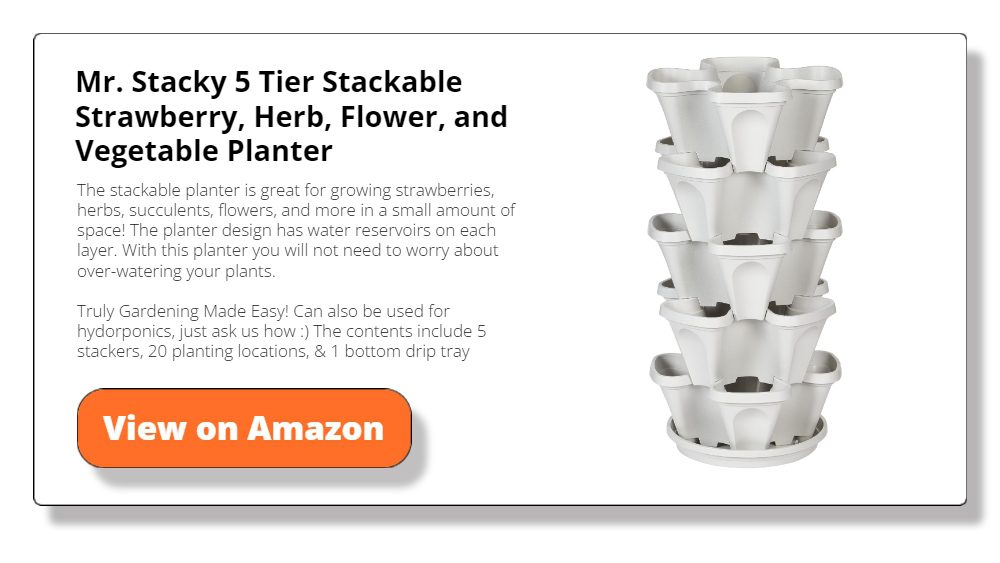
Using Containers for Flexibility
Containers offer the freedom to move plants around. They’re great if your soil isn’t ideal or if you’re renting your home. Almost any plant can grow in a well-sized container. Make sure to use good potting soil and ensure proper drainage.
You can use containers for herbs, small veggies, or dwarf fruit trees. Change the layout whenever you like. It’s your garden, after all.
Incorporating Water Features
Water features bring a new level to edible plant garden. A small pond can house fish and attract helpful insects. The sound of water also adds to the garden’s peaceful vibe.
If a pond isn’t possible, even a small fountain can work. Place it near plants that need more moisture. It’ll add beauty and help with watering.
Seasonal Planning for Year-Round Appeal
A year-round garden keeps your table full and your yard beautiful. Plan for plants that grow in different seasons. You could have kale in the winter and tomatoes in the summer.
Remember also to include perennial plants like blueberries. They come back each year with minimal effort. Perennial vegetables and fruits give you something to look forward to each fall.
Designing an edible landscape is like painting a canvas. Mix colors, shapes, and heights for a stunning effect. Your garden can be a place of beauty that also fills your plate.
Plant Care Tips
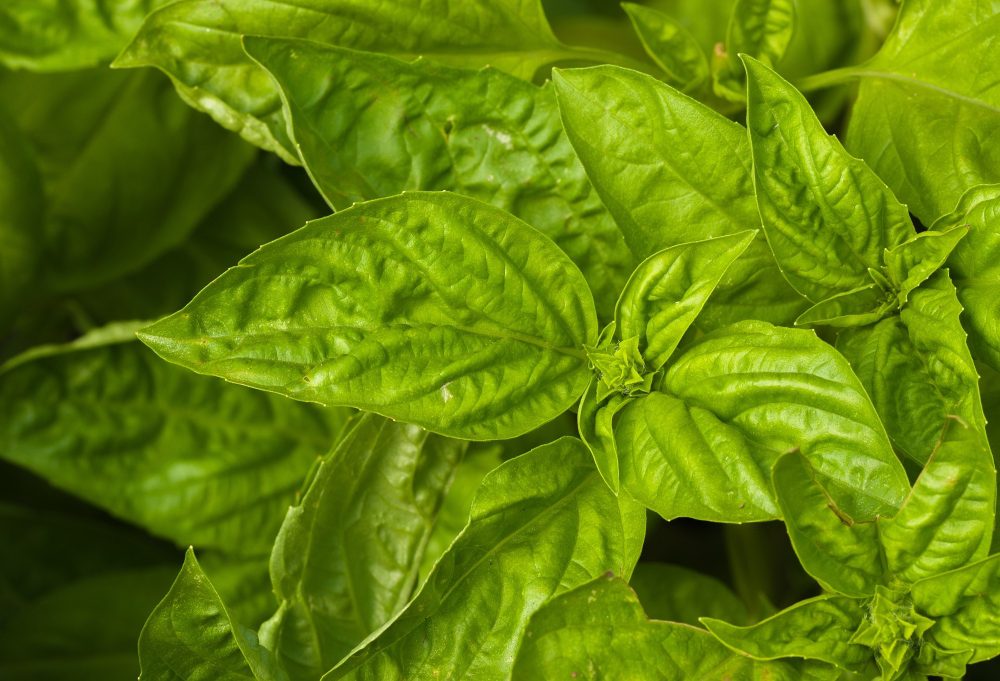
The effort and time you spend on your edible plants will determine the next harvest yields. While each plant has its needs, some general tips apply to all. Below are some useful tips to help your plants reach their peak.
Watering Wisely
Water is crucial for any garden, but too much or too little can be a problem. The key is to water deeply but less often. This method helps roots grow strong and deep. If you water too much, you risk drowning the plants and causing root rot.
On the other hand, if you water too little, plants can dry out and not produce well. A good rule is to water when the soil feels dry an inch below the surface. Use a watering can or hose to water the base of the plants, not the leaves. Wet leaves can lead to mold and disease.
Fertilizing for Success
Fertilizers are like the nutrient supplements that keep us healthy. It gives plants any missing amino acids, vitamins, and minerals needed to grow their fruit or vegetables. But each plant has its own needs, so it’s good to research.
Too much fertilizer can burn or make plants grow too fast and weak. Too little, and they won’t produce much. Use a balanced, all-purpose fertilizer for most edible plants.
Pay attention to the nutrient requirements of certain fruits or vegetables. They may need a specific fertilizer to grow big and healthy. You can always ask your local gardener what fertilizer is best for the plants you plan to grow.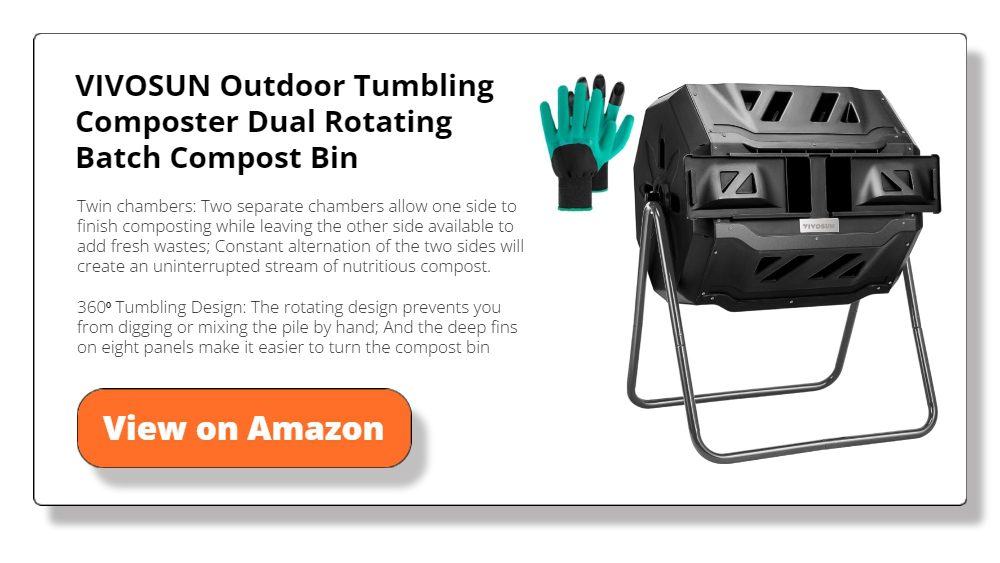
Pest Control Without Chemicals
Pests will ruin all the plants you grow in your garden if you leave them alone. You don’t need harsh chemicals to keep them away. There are natural methods that work well.
Planting marigolds or garlic near more vulnerable plants can deter pests. They don’t like the smell. You can also make a spray from crushed garlic and water to keep bugs away. If you find caterpillars or larger pests, pick them off by hand.
Chickens or ducks can also help as they eat many common garden pests. Always check for pests when you water or harvest. The earlier you catch them, the easier they are to control.
Mulching for Moisture and Weed Control
Mulch is like a protective blanket for your garden. It keeps moisture in and weeds out. Use organic mulches like straw or bark to cover the soil around your plants. This substance helps the soil stay cool and moist longer. You’ll need to water less, saving time and resources.
The mulch also blocks light that weeds need to grow. Less weeding means more time enjoying your garden. Just be careful not to pile mulch against the stems or trunks of your plants. This method can cause rot and other issues.
Pruning for Health and Yield
Pruning means cutting back plants to help them grow better. It can seem scary to cut your plants, but it’s good for them. For fruit trees and berry bushes, pruning helps shape the plant. Pruning makes it easier to harvest the fruit later. Cut away any dead or diseased branches first. Then, focus on shaping the plant for better light and air circulation.
Some plants, like tomatoes and herbs, also benefit from light pruning. Cut away the small shoots that grow between the main stem and branches. Removing useless stems helps the plant focus energy on growing fruits.
Always use sharp, clean tools when pruning. Dull or dirty tools can harm the plants and spread disease. A good example is the Garden Clippers. Its non-stick grip and bypass blade design let you prune like a professional gardener.
Remember, a well-cared-for garden rewards you in many ways. You get fresh, tasty produce and a beautiful outdoor space.
Conclusion
Edible plants gracing your garden give you the best of both worlds. A colorful array of plants adds personality to your outdoor space and fresh ingredients for your kitchen.
Following our guide should help you create an incredible edible landscape in your home. Remember to take the time to select your plants to get the most out of your garden.






